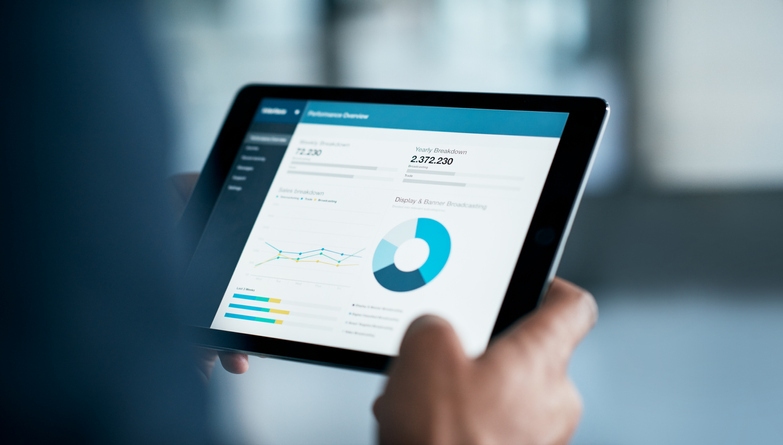Capitalization Tables: Stocks and Securities
A capitalization table (“cap table” for short) is a precise record of who owns a piece of a corporation and how big each piece is. In other words, it discloses the total market value of a company and how its divvied up. Some people hear the term “cap table” and think “stock capitalization table”. This association paints an incomplete picture of the enormous utility capitalization tables have to offer. Today, we’re setting the record straight. So, buckle up. You’re the Alice to our White Rabbit—the Neo to our Morpheus—and we’re about to show you just how deep the rabbit hole goes.
Capitalization Tables Manage Equity
Thinking of capitalization tables in terms of “stock” is like thinking of Disney World in terms of the teacup ride. Sure, that’s part of it. But, to understand the full scope of what capitalization tables do, the operative word is “equity”. Shareholder equity refers to assets minus liabilities. The term is often used in reference to those who hold a percentage of ownership in a company. A stake of equity is typically divided into securities. Securities include financial instruments like common stock, convertible preferred stock, stock options (incentive and non-qualified), restricted stock units, warrants, and convertible notes.
Common Stock
The main component of shareholder equity is common stock. Normally (and there are always exceptions), common stock confers voting rights to shareholders; one vote per share. However, companies may choose to issue multiple classes of stock, each with its own set of features. For example, Class A common might have standard voting rights, but Class B common might be restricted to founders and have multiple votes per share. Class C shares might have no voting rights at all. Your capitalization table software must be able to report ownership and/or voting percentages based on the various stock classes you choose to issue.
Convertible and Straight Preferred Stock
Preferred stock trumps common stock in receiving dividends and liquidation payouts. Typically, preferred stock has no voting rights. For straight preferred shares, the story ends there. But holders of convertible preferred stock can exchange their shares for common stock. Doing so may also grant them voting rights.
The ability to convert preferred shares is conditional to the current common stock price and may be prohibited until a specified date or event. The conversion ratio dictates the number of common shares received for each share of preferred stock you convert. To be worthwhile, the price of common shares must exceed the price of convertible preferred shares divided by the conversion ratio. Your capitalization table should facilitate the modeling of conversions based on different price and date assumptions. It should also allow for mandatory conversions, as may be required by an IPO or other liquidity event.
Stock Options
Stock options can become stock shares when they vest. Startups often use stock options to recruit employees before they have the funds to offer higher salaries. The first $100,000 in stock options, known as incentive stock options or “ISOs”, receive favorable tax treatment. Non-qualified stock options, or “NSOs” do not receive this benefit. Options might vest all at once or in yearly installments. Once vested, employees can exercise their options at a predetermined strike price based on the results of a 409A valuation. Termination of employment usually stops vesting.
Restricted Stock Units
Similar to stock options, restricted stock units (RSUs) can be redeemed for shares after the vesting period elapses or performance goals are met. However, the shares derived from RSUs are granted to employees, who don’t have to pay a strike price to convert them. That means RSUs always have value, unlike stock options (which only have value above the strike price). Employees are taxed when they receive the shares. As with stock options, RSU can vest all at once (“cliff” vesting) or in serial installments (“graded” vesting). An IPO or other liquidity event can trigger vesting, usually after a 180-day waiting period.
Warrants
Warrants are like long-term stock options. They are frequently packaged with other equity or debt as a “kicker” to entice investors. For example, 10% warrant coverage on a $5M bond offering will provide warrants worth $500K worth of shares upon exercise. Warrants might extend over five to seven years, if not longer.
Convertible Notes
Founders frequently issue convertible notes during seed-round financing. The notes can later—usually after 12 to 24 months—convert to stock, often at a discount of 15% to 25%. Conversion may be triggered by specific events, such as attaining certain fundraising targets. The notes may be capped as to their ultimate value. Convertible debt deals are usually easier to implement than more-complex equity deals.
Convertible Equity
This is a fairly new beast; a sort of hybrid between convertible preferred stock and convertible debt. Investors buy convertible equity at a discount to value, usually at a startup’s early stage. This instrument does not have to be repaid; nor does it accrue interest and, therefore, is not subject to default risk that might hamper an entrepreneur’s progress. Convertible equity can be issued with valuation caps and may be subject to mandatory conversion—either due to a liquidity event or the absence of a liquidity event within a set timeframe.
Capitalization Table Expectations
Capitalization tables must record ownership—or potential ownership—stemming from every form of equity you issue. This means organizing immense amounts of data encompassing the granular configuration of each share. Some forms of equity share common fields of info (e.g. “shareholder name” or “date of issuance”). Some fields, like “liquidation preference” or “discount percentage”, are unique to a specific type of security. The pressure to maintain a neat and accurate capitalization table will increase as your equity structure grows more complex. Capitalization tables are also expected to record fully diluted shares; the number of actual and potential common shares stakeholders would own if all equity holdings were converted or exercised.
One of the biggest expectations placed on capitalization tables is the ability to visualize and reorganize data. The easier it is to sort, filter, and rearrange data in your capitalization table, the easier it is to gain insight into how strategies and outcomes affect your stake of ownership. Differentiating diluted shares on the basis of voting rights can help you navigate the politics of divisive decision-making. Dividing your equity between vested and nonvested ownership is useful in understanding the number of stakeholders with voting power as well as how that number might change as options and RSUs vest. Typically, when a startup grants stock options or restricted stock units, recipients must wait out a vesting schedule specifying how long before they can convert these goodies into common stock. Until options and RSUs vest, they may have value, but they don’t have voting rights.
Before we discuss how cap table software has raised the bar, pushing the limits on what capitalization tables can do, it’s important to recap the basic functions. Regardless of whether or not you use software to store your cap table data, it should be able to do these three things:
- Maintain a record of your company’s ownership,
- Visualize and reorganize your data, and
- Allow you to view your fully diluted shares.
Of course, a case can be made for adding to or changing this list, but it should serve as a solid baseline of functionality. However, many businesses take things up a notch with the help of cap table management software.
How Cap Table Software Has Raised the Bar
Expectations have been raised in recent years, as capitalization table management software has become increasingly sophisticated. The most obvious benefit this software has introduced is automated version control. The data stored in capitalization table software is updated instantly upon saving changes. This saves entrepreneurs, investors, and law firms from having to dig through their files (or through long email chains) to find the most updated version of their data. Automatic versioning has also increased the accuracy of cap table information.
Capitalization table management tools have made it easy to model hypothetical ownership scenarios resulting from further fundraising rounds. Most platforms also support waterfall analysis, providing a clearer picture of how vesting schedules for stock options and RSUs will affect ownership percentages. Beyond simply modeling your data, cap table management software has revolutionized the process of reporting on that data. The best cap table software offers pre-built or “auditor-ready” report templates, giving you the information you need at the click of a button.
Cap table management software has also simplified the headache of capitalization table management and maintenance. The ability to sync exercise and expiry dates with calendar apps and set customized alerts or notifications has taken the some of the pressure off compliance and oversight. Most cap table software providers also offer discounts on 409A valuations. Assuming appraisal firm operates independently, this can be a huge benefit.
Conclusion
These are just a few of the features and functions of capitalization tables and cap table software. The list of expectations and possibilities stretches far beyond what’s mentioned here. However, we hope we’ve been successful in showing you that there’s more to capitalization tables than the ability to manage your stocks. If you’re interested in learning more about cap tables, check out the EquityEffect blog. For more information on EquityEffect’s equity management platform, schedule a demo or create a free account today!



